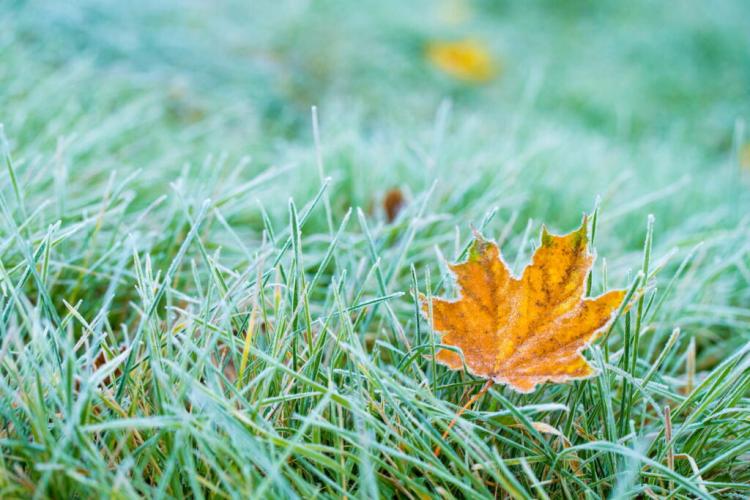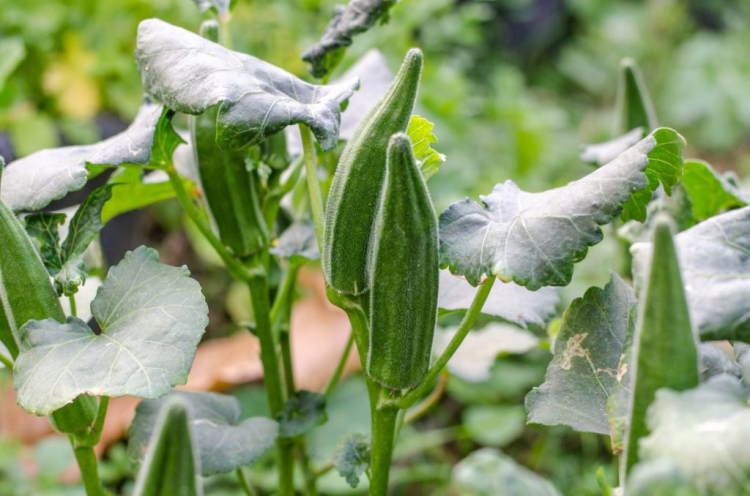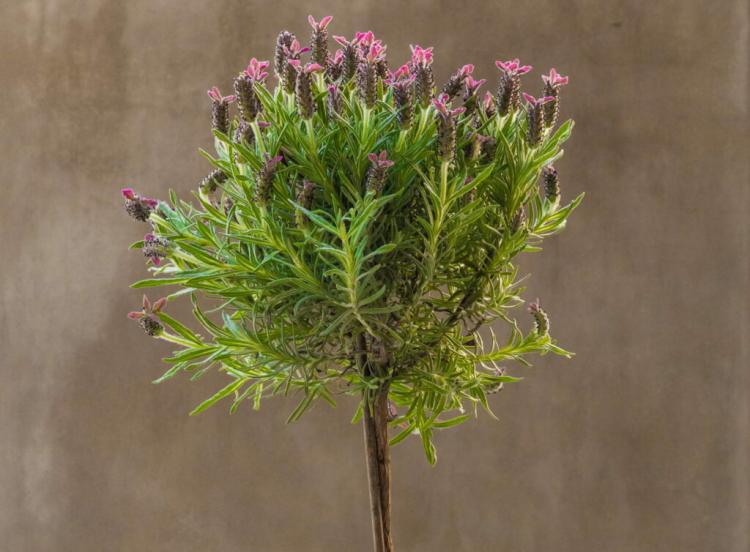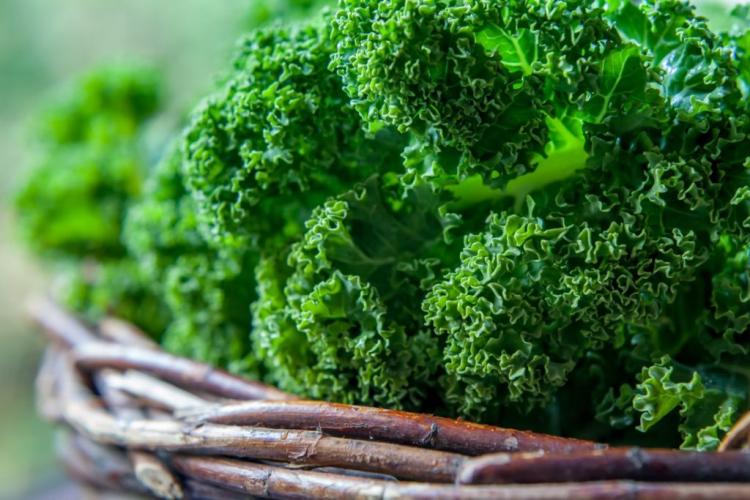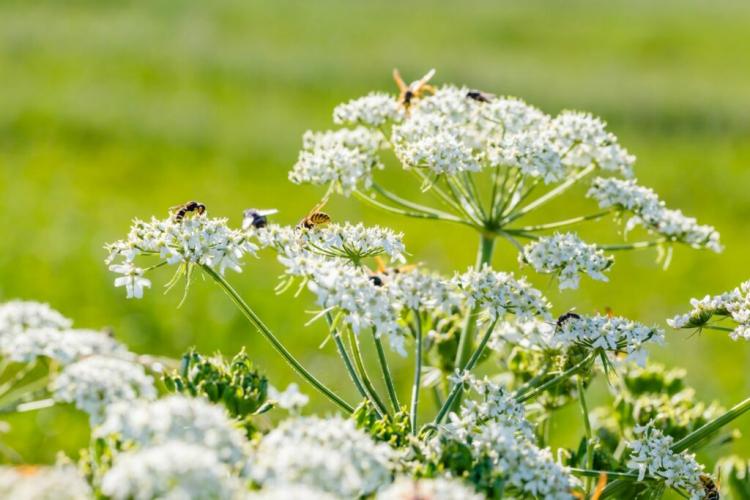Making Lawns Winterproof And Overwintering: Tips From The Experts
How can you best prepare lawns for a possibly harsh winter? We have helpful expert tips for wintering your lawn.
Over a third of all Americans have a garden – and therefore usually a lawn as well. While the potted plants are mothballed and the roses are lovingly covered with winter protection, the lawn often goes unnoticed. A harsh winter also saps the strength of the beloved garden plant. We will help you to make your lawn winter-proof. From the last fertilization to mowing at the right height – with our tips your lawn will withstand winter. Then we will also show you what needs to be considered when spring arrives again after winter and the new year begins again for your lawn.
Hibernate your lawn: prepare your lawn for winter
Table of Contents
The green carpet in the garden needs to be well and properly cared for in autumn, otherwise, its owners will be punished with holes and yellow or brown lawns in spring. The last time to fertilize, the last lawn cut before winter and the correct lawn height – all these factors should be taken into account before the cold season.
When is the last time to fertilize the lawn before winter?
When the last lawn fertilization takes place, depends above all on your choice of fertilizer and the use of the lawn. In general, October is considered the last useful month for lawn fertilization.
If you use organic lawn fertilizer, it is important to fertilize regularly – ideally once in late spring and once in September or October. Since the organically bound nutrients are converted depending on temperature and humidity, you do not have to worry about over-fertilization or leaching if you do not adhere to this period exactly. The autumn fertilization should also contain a sufficient amount of quickly available potassium. Because potassium increases cell wall stability and frost tolerance, two properties that can protect your lawn from winter damage. We present our purely organic and potassium-accentuated Gardender organic autumn lawn fertilizer to you in more detail here.
If you use a mineral fertilizer that does not have a long-term effect, you can do the last fertilization between June and October. This point in time depends on the load on the lawn. The rule of thumb is the higher the load, the more frequent the cuts, and the more intensive and longer the fertilization. So if you have a lawn for use and do not want to play football on it all autumn, you do not have to fertilize until the least possible time.
In the case of autumn fertilization with a mineral long-term fertilizer, the last fertilization can be brought forward a few months. When using it, make sure that its effects expire in October to avoid leaching. For example, if you use a long-term mineral fertilizer with a duration of four months, the last fertilization takes place in June or July.
Every form of mineral autumn fertilization – as a long-term fertilizer or as fertilizer without long-term effects – must contain potassium that is available quickly enough. Since significantly less nitrogen should be fertilized from August, a long-term fertilizer used in June or July must not be nitrogen-based. Too late nitrogen fertilization lowers frost tolerance and can lead to frost damage with yellow lawns.
Summary: When is the last time to fertilize the lawn?
- October is the last month in which lawn fertilization before winter still makes sense. The last fertilization can be carried out as early as June for a lawn that is not used for a lot of use.
- An organic, mineral, or organic-mineral long-term fertilizer can bring the last fertilization forward.
- Organic fertilization can be done all year round, but late spring and September are best because of the relatively slow implementation.
- If you fertilize with mineral fertilizers, your final fertilization depends on the use of the lawn: If it has to be mowed frequently, it is also fertilized longer to keep the lawn dense.
- All autumn lawn fertilizers should contain potassium to make the grass plants more tolerant of frost.
Tip: If a fertilizer containing too much nitrogen is used in autumn, the frost tolerance of the grass plants will suffer. Most of the time, the turf turns yellow partially or completely, and later even brown. These spots indicate frozen blades of grass that have been killed.
Hibernate the lawn: when is the last time to mow?
As is well known, a lawn does not consist of just one type of grass: Regular seed mixtures contain both fast-growing genera and species as well as the slower, so-called “sub-grasses”. They usually ensure the dense base of the lawn. If the last cut is very late, you are at a disadvantage: while the fast-growing grasses start again with the last rays of sunshine in late autumn, the underground can no longer keep up. As a result, they are shaded the entire winter and remain disadvantaged when spring starts. The growth inhibition by the shading can lead to the death of the under grass, which can result in a thin, patchy lawn with brown spots. To avoid this, the lawn should be mowed for the last time in mid-November at the latest.
Summary: When is the last time to mow the lawn?
- The last lawn cut before winter should be done in mid-November
- Too late a cut can lead to the death of the important under grasses
You can read more information on the subject of “mowing the lawn” in our special article.
Tip: If large amounts of leaves still fall on your lawn after the last mowing, you should roughly remove them. Because the leaves lying on the lawn take away the light and cause uneven budding in spring. We have put together for you what you can do with the autumn leaves in the garden.

Hibernate the lawn: which lawn height is the best?
The best lawn height depends on the type of lawn you have. While an ornamental lawn can be mowed very briefly, there are actually no specifications at all for an extensively treated lawn or even a wild meadow. Basically, a lawn should go briefly into winter so that all lawn grasses are illuminated equally. In this way, you can achieve uniform budding in the next year.
In the following table, you will find the right cutting times for your lawn and a winter-appropriate cutting height recommendation.
| Lawn type | Cutting time at the height [cm] | Winter cutting height [cm] |
|---|---|---|
| Ornamental lawn | 3-6 | 2 |
| Usable lawn/play lawn | 6-10 | 3 |
| Hard-wearing lawns/sports lawns | 6-8 | 3 |
| Extensive lawns/meadows | – | 6th |
Summary: What is the best lawn height?
- Which lawn height is the right one depends on the type of lawn.
- A lawn should be mowed briefly in winter.
- The ornamental lawn is mowed very briefly before winter, a less polluted extensive lawn remains significantly longer.
Maintain lawn in winter
Didn’t manage to maintain your lawn before winter? Before you reach for the snow shovel and fertilizer spreader, it is better to first read which rules apply to lawn care in winter.
Fertilize the lawn in winter?
Your lawn does not need fertilization in winter. It only grows from a soil temperature of around 8 ° C, which in winter is well below this for most of the time. Applying an organic fertilizer at this point does not harm, but it also does not affect. Only a few corvids then like to mess with the fertilizer grains that are fragrant for them.
In no case should you fertilize minerally in winter? The fertilizer cannot penetrate the frozen ground anyway, but it can be loosened by briefly melting snow or sleet and then washed away. Where it ends up, it is probably not wanted or it collects in detrimental concentrations in sinks in your lawn. The consequence would be salt damage to the grass plants, which are already stressed in winter and show up as yellow spots.
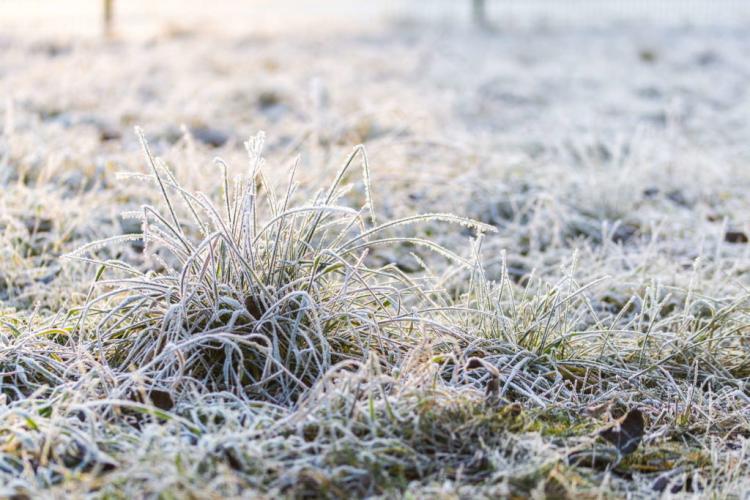
Summary: fertilize your lawn in winter?
- A lawn does not need fertilization in winter.
- Organic fertilization does not do any harm, but it can be preyed on by birds and is not effective.
- Mineral fertilization in winter can damage your lawn or other garden areas.
Mow the lawn in winter?
As already explained above, the last mowing should take place in mid-November at the latest. Normally, your lawn will stop growing after this point. Even if it is still growing, do not mow it again. Because in the cold season the grass plants are no longer able to compensate for the decapitation of their leaves. Leaves opened by the cut are susceptible to frost and the simulated emergency shoot shares this property. A cut in winter makes your lawn more susceptible to frost damage and should therefore not be done.
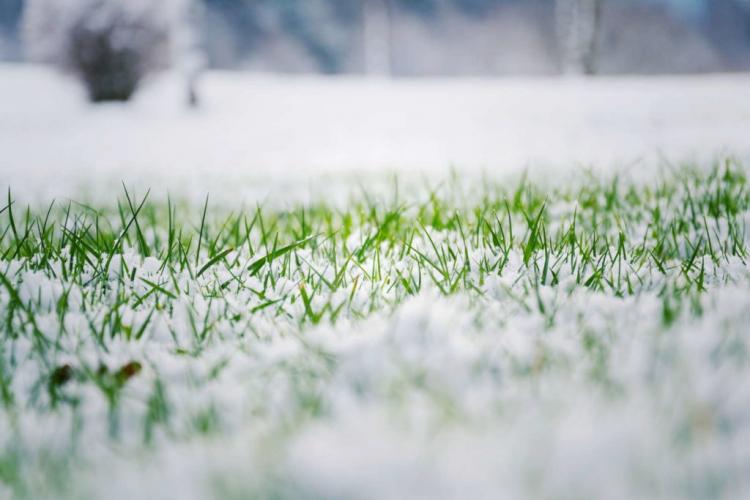
Summary: mowing the lawn in winter?
- The lawn should not be mowed in winter.
- Mowing in winter can make plants more susceptible to frost.
Sowing the lawn in winter?
Lawn sowings should be done between mid-April and September. Under no circumstances should there be a risk of a late or early frost. Sowing outside of this time window can lead to a shift in the grass composition. The reason for this lies in the different properties of the grass types and varieties contained in the seed mixture: some still grow well even at lower temperatures, while others hardly move or even freeze to death. The grasses that have an advantage due to the prevailing temperature overgrow the less vigorous grasses. The result of the sowing then no longer corresponds to the desired and sown type of lawn.
Summary: sowing the lawn in winter?
- Sowing the lawn in winter has little chance of a successful emergence of the grass.
- If the seeds come up, this happens unevenly and the later lawn does not correspond to the desired composition.
Lawn in frost: do not step on it?
Often there is a warning against stepping on the lawn when it is frosty. The frozen stalks should become brittle and break off in frost, and the risk of soil compaction is particularly high in frost. In spring, brown spots can allegedly appear where the lawn has been walked on. These claims are persistent and never very well-founded. We’ll clear up the rumors.
On the one hand, the stalks of your lawn are by no means completely frozen and as brittle as thin icicles. The high potassium concentration in the plant cells protects them from completely freezing through, just as salt in seawater protects the sea from freezing over. If you are unsure, you can test a frosted blade of grass for flexibility.
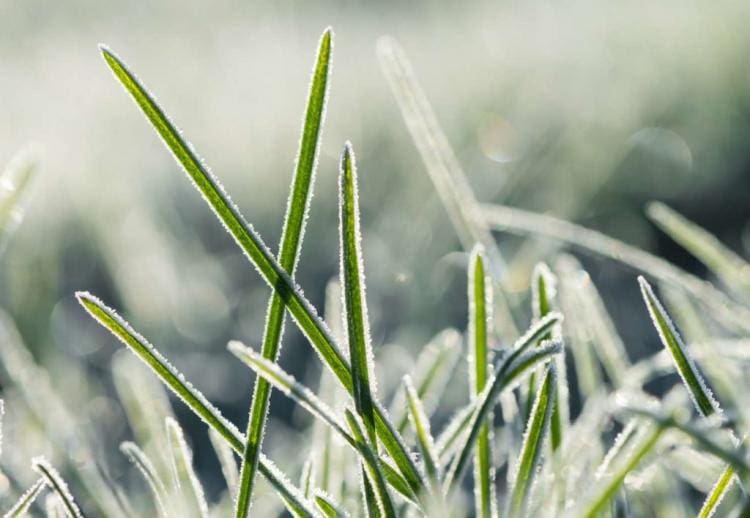
The claim that stepping on a frozen lawn leads to increased soil compaction is also completely out of practice: as soon as the ground is frozen through, the logging work begins in the forest – precisely because the ground is frozen and for this reason the load from the heavy machinery better resists. Even the much-invoked “brown spots” that can appear in spring have not yet been clearly attributed to our footprints. Of course, they can occur if piles of snow or other heavy objects are stored on the lawn for a long time.
The sward can be a little vulnerable when the ground is completely frozen and only the upper centimeters have thawed by the sun of the day. Then these parts are quite soft and can be downright “smeared” by stepping on. Such smearing can result in very superficial compaction. But that can also be avoided by taking a cautious approach. Such superficial compaction loosens itself again in the spring in healthy soil with a healthy lawn. It goes without saying that you should avoid driving heavy machinery or vehicles on the lawn in winter – just as in summer.
Summary: Do not step on the lawn when it is frosty?
- Even in frosty conditions, lawns can be walked on carefully without the grass plants being damaged or the soil is compacted.
- Only excessive and unnecessary loads can cause the upper soil layer to be smeared when the soil is thawed.
Maintain lawn after winter
Spring begins with the first warm rays of sunshine – and at the same time lawn care begins after winter, which should give the green carpet a good start into the new year.
When the spring sun makes the wet lawn glisten again and the thermometer gradually climbs towards double-digit values, the soil gradually warms up. How quickly this can be done depends largely on the type of soil you have: If you have sandy soil, it will warm up the fastest. A heavy, loamy, or clayey soil contains a lot of water, which needs a lot more heat to increase its own temperature. So a heavy soil heats up more slowly. Accordingly, growth on heavy soil also begins later, because lawns only grow from a soil temperature of around 8 ° C.

Scarify and ventilate the lawn after winter
When the lawn is growing and has already been mowed for the first time – usually around April – the lawn can be scarified if necessary. Heavy soils can be aerated and sanded for the first time. Sanding makes sense on these soils because the sand creates cavities that improve the aeration and drainage of the soil. The lawn has less to contend with waterlogging and lack of air at the roots, it can absorb nutrients more effectively, it takes deeper roots, and often benefits visibly from bringing in the sand. So that the sand gets as deep as possible into the ground, it is only used after the lawn has been aerated. Scarifying, airing, and sanding should be carried out a maximum of once a year. The first reseeding can now also be carried out on a thin sward.
The first lawn fertilization of the year
The following applies to the first fertilization in spring: Light soils are fertilized early before natural budding takes place – this time falls in March or April. Heavy soils are only fertilized when natural growth has started and the nitrogen supply in the soil has already been somewhat depleted. This time is around the end of May to the beginning of June. Fast-acting, nitrogen-based fertilization can give your lawn a decisive advantage over moss in the lawn and wild herbs in spring. The latter will be happy about the first rays of the sun just like your lawn and so root weeds should already be gouged out or weeds in the lawn should be combated in some other way.
Summary: Maintaining your lawn after winter
- Light soils warm up quickly and, accordingly, lawn growth begins earlier; heavy soils warm up slowly, so lawn growth also begins later.
- Light soils can be fertilized from March, heavy soils from May.
- The first mowing can usually be done in April.
- After the first mowing, if necessary, it can be scarified, ventilated, sanded, and re-sown.
- Wild herbs should be consistently removed from the beginning of the year if they are not supposed to establish themselves on the lawn.
You might so like:
